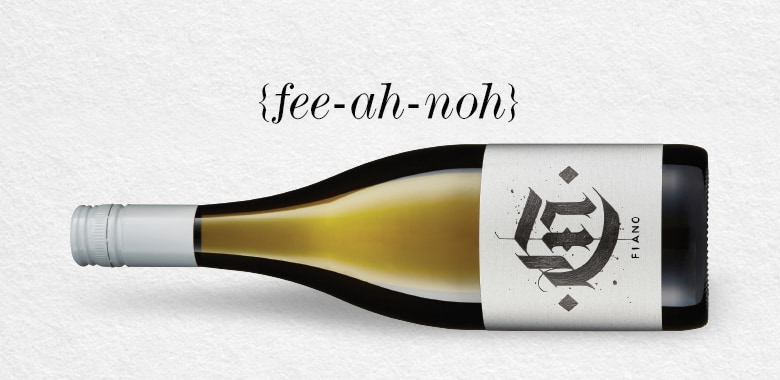
Wine
What is Fiano?
A relative newcomer to our shores, Fiano is being flagged as Australia’s next ‘it’ white wine. But what type of wine is Fiano? What is Fiano similar to? And what do you eat with Fiano? Well, we’re here to answer all those questions and more.
Shop Fiano
Australia’s plantings of Fiano are increasing – the variety is perfectly suited to our warm climate and delivers a deliciously refreshing wine that works well with our Australian lifestyle.
Fiano pairs with an assortment of dishes including seafood, creamy cheese styles, vegetarian and pasta.
It’s best enjoyed while young and fresh but can be cellared for up five years due to the natural acidity.
Fiano is a medium-bodied white wine.
Did you know that Fiano is a favourite for our little bee friends when it is flowering?
What Type of Wine is Fiano?
Famous for being full of citrus and stone fruits with racy and mouth-watering acidity, Fiano can range in style from light and fresh to rich and mouth-coating.
Our Tasting Panel Co-Chair Adam Walls is a regular judge at the Australian Alternative Varieties Wine Show, where this delicious white wine is divided into two classes: light and fresh, and full-bodied and textural.
“The style in which it is made is determined by the winemaker. For example, if a winemaker decides to pick the grapes later in the season and/or uses lees during fermentation, their Fiano will be a richer, more textured style,” says Adam.
Where is Fiano from?
In its Italian home, Fiano is mainly grown in the hills surrounding Avellino in the Campania region. It has been traced back to ancient Rome and is thought to have been the primary variety in Apianum, an ancient Roman wine, meaning ‘bees’ in Latin. Even today, swarms of bees are drawn to the sugary pulp of Fiano grapes in Avellinese vineyards.
Where does Fiano grow in Australia?
“An Italian white, Fiano thrives in hot, dry climates, making it perfect for many Australian wine regions,” Adam explains. “Its ability to handle the increasing heat spikes we’re experiencing during vintage also means it’s a very environmentally friendly variety – it requires far less water than most other varieties.”
“What’s more, Fiano retains its acidity in the heat. So, while other whites like Sauvignon Blanc and Chardonnay often lose their acidity when the temperature rises, Fiano can be made into a beautifully balanced, refreshing wine.”
“When Coriole in McLaren Vale released Australia’s first Fiano in 2005, it signalled an exciting evolution for white wine lovers,” says Adam.
Its love of hot and dry climates has seen it thrive in Australia with regions including McLaren Vale, Clare Valley, the Hunter Valley, Riverland, and Riverina making superb examples. Not to be outdone, there are also some top-class examples coming from the cooler climates of the Adelaide Hills and the King Valley.
“They suit our climate and lifestyle so well. Fiano is very drought and heat tolerant and has lovely natural high acidity, it is also disease resistant and has great thick skins. Also, the resultant wine works so well with our foods and regional produce. Being coastal, we eat a lot of seafood in the region, and Fiano has lovely texture and line that works perfectly in this space,” explains Corrina Wright, Winemaker for Oliver’s Taranga, McLaren Vale.
Is Fiano too Similar to Sauvignon Blanc?
Fiano is either lighter in body with dominant citrus fruit flavours, or richer with more weight and pronounced stone fruit characters. Some of the richer wines are the result of the smart use of lees or subtle oak influence.
“So, if you’re a fan of Sauvignon Blanc or Pinot G, you’ll likely enjoy the lighter styles, while lovers of modern Chardonnay will find much to enjoy in the richer examples,” Adam says.
What are the Best Food Pairings for Fiano?
Famous for being full of citrus and stone fruits with racy and mouth-watering acidity, it can range in style from light and fresh to rich and mouth-coating.
“Given that Fiano hails from a region that is coastal bound, it makes sense it is a wine that works well with seafood including raw and baked fish, shellfish, and molluscs,” Adam explains.
It’s also perfect with vegetarian pasta dishes, as the acidity in the wine offsets the richness of cream-based sauces and complements the acidity of tomato-based recipes.
So, there you have Fiano! A fabulous and delicious white that’s sure to become a new favourite. Start shopping and add some to your cellar collection today!